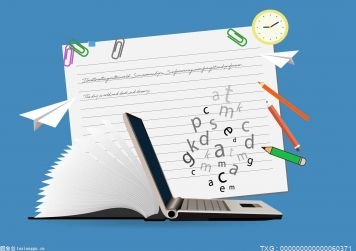天天通讯!Top 15 Dogs Behavior Myths. 狗狗容易被误解的行为TOP15
When it comes to dog behaviour, some widely accepted beliefs are simply not true. Here’s the lowdown(内幕/真相) on 15 common canine misconceptions and the actual truth of the matter.
#1 Playing tug makes dogs aggressive 玩“拔河”游戏会使狗有攻击性
 【资料图】
【资料图】
A study published in the Journal of Applied Animal Welfare Science examined 50 people and their dogs playing tug-of-war-type games. Researchers concluded the game itself had no significant impact on aggression directed at either family members or strangers.
In fact, they reported that dogs that played tug of war had more confident interactions with their people. This makes sense as tug is a cooperative behavior directed at the “prey,” a.k.a. the toy. Tug can provide exercise, release tension, act as an outlet for excess energy, and serve as a cooperative, fun activity.
Tug tip: Teach “drop it” so you can insert breaks into the game to control the excitement level. And if at any point teeth accidentally contact skin, say, “Too bad!” and put the toy away.
#2 Taking away food during mealtime prevents food aggression(护食)
The thinking behind this is you will accustom your pup to having people touch their food, but taking your pup’s food while he’s eating will only teach him that your approach means bad things happen. Instead, teach your puppy that your approach is a wonderful thing.
Every now and then, pass by while your pup is eating and drop a super yummy treat in the dish.
#3 Dogs want to dominate you
Everything from jumping on people to pulling on-leash to exiting a doorway first has been ascribed to doggy dominance...They simply do what works, and just need training and boundaries.
The dominance myth, by the way, originated with a wolf study about “alpha wolves” that was later debunked. Sadly, the mentality had already trickled down to dog training and has never left, even though the training approaches motivated by correcting so-called “d
ominance” are outdated and damaging.
#4 A wagging tail means a happy dog 有研究表明狗开心或者自信时,尾巴稍微偏向右摇;狗受到惊吓时尾巴向左摇摆。
Many dogs wag their tails when happy, but don’t assume that a waving fur flag always indicates joy. Dogs will wag their tail to convey a range of emotions, including happiness, feeling threatened, anxiety, submission, and excitement. An anxious or fearful dog may hold their tail low and wag in a small, fast arc. A confident dog or one who is broadcasting dominance over another dog may hold their tail high and wave it stiffly like a flag. Tail wags must be assessed in conjunction with other body language to paint an accurate picture of how a dog is feeling.
Pro tip: Direction of a tail wag can convey emotion. Studies show that dogs wag their tails slightly to the right when they are happy or confident and to the left when they are frightened.
#5You should wait until puppies are fully vaccinated to socialize 狗狗的最佳走入社会和学会融入社会的时间是他们4-12周,7-9周就可以去kindergarten啦。
Most behaviourists agree that the window of optimum socialization, meaning the period during which you can expose a pup to novel stimuli(新异刺激(novel stimuli)新异刺激即指一系列具有突然性、未预料性和足够强度的刺激,) and they will be less likely to fear those things later, is between four and 12 weeks. But vaccinations are normally not complete until 16 weeks. While traditional advice was to wait until full vaccination status was reached to socialize puppies, the American Veterinary Society of Animal Behavior now recommends introducing pups to new people, places, and experiences before sixteen weeks—just take it slow and avoid places with high canine traffic—and even advises starting puppies in kindergarten classes at seven to eight weeks old.
#6Your dog feels guilty
You come home to find that your dog has shredded your favourite pair of slippers. “Bad boy! What did you do?” you admonish as your dog hangs his head and averts his eyes, ears lying flat. Is your dog feeling guilty? Probably not— he’s simply reacting to being yelled at. Dr. Alexandra Horowitz, a dog-cognition expert at Barnard College, studied whether humans can detect guilt in dogs. Her study found that dogs most often looked guilty when a person scolded or was about to scold them, not when the dog actually disobeyed the person"s request not to eat a treat.
So, do dogs actually feel guilty? Jury is out. (众说纷纭; 未有定论) "My study was decidedly NOT about whether dogs "feel guilt" or not,” says Horowitz. “I would feel dreadful if people then thought the case was closed on dogs (not) feeling guilt, which is definitely not the case."
#7In a multi-dog home, the “alpha” should be given treats and attention first 多狗家庭中,主人给与不同的关爱和待遇并不会改变狗狗之间的等级地位。
Dogs establish dominance and submission among themselves. While some owners give the “top dog” treats and attention first to “support the hierarchy,” in fact, attempting to bolster either dog’s position by treating first is not likely to make any difference.
#8 Petting your dog when he’s afraid will reinforce the fear 狗狗害怕时抚摸他不会强化它的恐惧心理。只有行为可以被强化,情绪是不会的。
Fear is an emotion and as such, it cannot be reinforced by receiving a reward. If I were afraid of being mugged and had to walk down a dark alley, would you giving me a piece of chocolate when I emerged make me feel any less afraid the next time? Nope. Behaviours can be reinforced; emotions cannot so go ahead and comfort your dog any way you’d like.
Top 15 Dogs Behavior Myths.被误解的TOP15狗狗行为
#9 Using treats to train dogs is bribery 食物训练是对狗狗进行贿赂
Most dogs are food-motivated, and treats make training easy and fun for everyone. But there is a difference between a reward and a bribe. Treating a dog who comes when called is a reward. Waggling a treat while saying, “Come!” is bribery. 喊狗时狗过来了给食物是激励,摇晃着食物对狗喊“come”是贿赂。 Treats can eventually be replaced by real-life rewards such as a door opening for a walk or eventually phased out completely should you wish but there is no harm in rewarding good behaviour with a treat. Positive reinforcement(正强化/积极强化) makes relationships better.
#10 If your dog growls, you should punish him狗低声吼叫时要对他惩罚
Growling is a dog’s way of saying they’re uncomfortable with something. 狗低声吼叫是说他们对某些东西不舒服。You want them to communicate this info, not escalate straight to biting. Think of growling as your dog’s early warning system. Veterinarian,animal behaviourist, and dog trainer Ian Dunbar calls deterring growling“removing the ticker from the time bomb.” Plus, if you punish dogs for growling, they will have one more negative association with whatever is causing stress.
Pro tip: If your dog growls, defuse the situation as calmly as possible.
Then, begin to modify the behaviour by addressing the root of the problem.
#11You can’t teach an old dog new tricks老狗学不来新花样
This one is an oldie but goody, much like senior dogs themselves!狗虽老但仍招人喜欢 You can absolutely teach an old dog new tricks. Done properly, trick training keeps canine minds active, and keeps dogs engaged and having fun. Studies of canine cognitive decline show that a multi-targeted approach, such as antioxidants combined with behavioral enrichment, is most effective at preventing dementia in dogs, so keep working that mental muscle!
#12When my dog barks at people or dogs who come near us on walks, she’s protecting me.我们散步时如果有狗或者人向我们走来,狗狗吠叫是在保护我。
While there are some dogs who are protective of their owners, the vast majority of dogs are actually protecting themselves. The leash prevents your dog from getting away when a big scary thing (a person or other dog) is approaching. The bark is your dog’s way of saying, “Don’t make me come over there, you big scary thing!” when what he really wants is to drive the scary thing away.狗狗吠叫是在表达“别逼我过去,你这可怕的大块头”。
#13 Dogs who are afraid of men have been abused by a man
普遍认为狗怕男人是因为有男人虐待过他。其实狗狗通常怕男人而不那么怕女人或者孩子,是因为男人块头大,声音更低沉,不走寻常路,眼睛还会瞪着狗狗。
This is a common assumption, especially among those who adopt shelter dogs and discover that the dog is afraid of men. Fearful dogs are normally more afraid of men than they are of women or children. Men are generally larger, have deeper voices, move differently, and may stare more directly. Although it is always possible that a dog has been abused by a man, it should never be assumed.
#14 Dogs urinate or defecate when we’re gone to spite us.狗狗趁主人不在家时大小便是为了刁难主人。
大家经常认为狗狗独自在家时大小便是为了报复主人把他单独留在家里。实际上狗狗还没领悟到报复或报仇的能力。对于已接受过如厕训练的狗狗,如果独自在家还会有小事故发生,可能是因为他们出现了分离焦虑。也有可能狗狗是懂投机的,认为主人在家时,他随意大小便会被教训,但是没人在家,那就难说了。
Though people commonly think their dog has eliminated inside the house to get back at them, perhaps for leaving them alone, this is not the case. Dogs lack the capacity for retaliation and revenge. A dog who has been potty trained but still has “accidents” when left alone may be suffering from separation anxiety. Or, he might be opportunistic, knowing that if he’s caught in the act when your home, he’ll be scolded, but when no one’s around, all bets are off!
#15 Some dogs need a heavier hand when being trained.有些狗狗受训练时需要粗暴些。以暴制暴解决不了问题。
Regardless of whether a dog is reactive, aggressive, or what some would term stubborn, no dog needs harsh physical corrections. Meeting aggression with aggression is never the answer and is likely to make things worse. Training and behaviour modification using positive, gentle methods is the way to go even with the most severe behaviour cases.
The article is selected from:
Nicole Wilde. Top 15 Dogs Behaviour Myths[J] Modern Dog 2023 Summer:70-73
标签:











